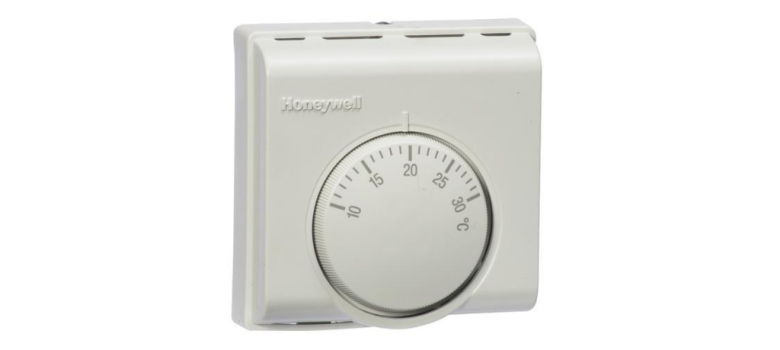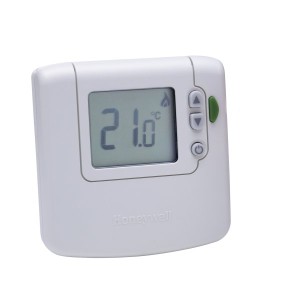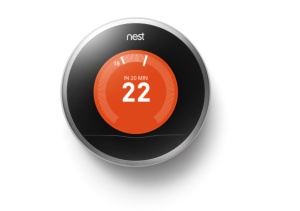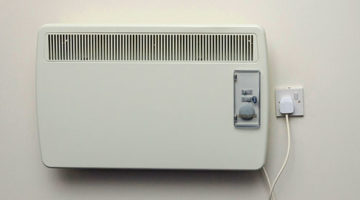
What is a thermostat?
The thermostat is a common fixture in most homes, helping to maintain an even temperature in the house all year round. In the winter, room thermostats (sometimes referred to as roomstats) prevent rooms from overheating. In the summer months, they ensure the heating system does not fire up unless the temperature of the house falls below a preset level.
How do thermostats work?
 A thermostat is normally a control unit for a central heating boiler, but these days it can also control electric heating such as infrared panels. You choose the temperature that you would like the house to be at via a dial or a digital display on the thermostat. The thermostat then monitors the ambient temperature of the air and instructs the boiler/heating system to turn on or off accordingly.
A thermostat is normally a control unit for a central heating boiler, but these days it can also control electric heating such as infrared panels. You choose the temperature that you would like the house to be at via a dial or a digital display on the thermostat. The thermostat then monitors the ambient temperature of the air and instructs the boiler/heating system to turn on or off accordingly.
If the temperature of the ambient air is lower than the requested temperature set on the thermostat, it will fire a message to the boiler to fire up and send hot water to the radiators to heat the house.
If the air temperature is too high, the thermostat will send a message to the boiler to switch off, which obviously should result in the home cooling down.
Using a thermostat will therefore ensure that the house stays at a regular temperature and rooms don’t overheat. The thermostat will ensure that the boiler keeps a constant temperature in the house, which results in an efficient heating system that will save you money on your gas bills.
How much can a room thermostat save?
A correctly-installed thermostat can save you £100s per year, however you have to know how to get the best out of it. For example, a pre-installed room thermostat can save about £65 for every degree centigrade you turn it down. Therefore if you normally have your home at 230C and then decide to turn the thermostat down to 210C, you should see energy savings of well over £100.
We have written a blog you can read here on the optimal indoor temperature, which discusses some of the common queries people have when it comes to setting their thermostat.
Thermostats do not speed up the rate of heating
One common misconception of thermostats is that if you turn up the dial of the thermostat, the room will heat up quicker. The rate at which a room heats up is dependent on the boiler, the size of the room, the size of the radiator and finally, how well-insulated the room is.
Thermostats and draughts
Roomstats are sensitive little things; if they are hit by prolonged cold draughts they will instruct the boiler to fire up. This means that they have to be positioned very carefully in the house.
For example, we have seen thermostats installed in clients’ hallways just by the draughty front door. This means that they will normally be recording a lower temperature than the actual ambient temperature of the house and will instruct the boiler to fire up, using more gas.
Thermostats are just part of heating controls
Thermostats are just one part of a home’s heating controls, which normally include a programmer and TRVs. They are designed to work seamlessly with the other components, with the thermostat overriding the programmer to prevent overheating. It is important that you don’t situate your roomstat near a radiator with a TRV because they will interfere with one another – that will mean the heating may go on and off unexpectedly.
To learn more abut TRVs, click here.
To learn more about programmers, click here.
Modern intelligent heating controls
 New intelligent heating controls such as Nest take the idea of the thermostat much further. They allow you to set the temperature of the home from the other side of the world via your phone, but they also take into account things like direct sunlight, which in the past has manipulated the ambient air temperature.
New intelligent heating controls such as Nest take the idea of the thermostat much further. They allow you to set the temperature of the home from the other side of the world via your phone, but they also take into account things like direct sunlight, which in the past has manipulated the ambient air temperature.
To learn more about intelligent heating controls, click here.












Hello.That’s really interesting. I suppose this one can save a lot of money exactly if not all rooms are residential. I’ve loked for programmable room thermostat here but after this article I became hesitate in modern Intelligent heating controls. As I understood this thermostat can get information from your phone but what will I do if I’m so far from my house and there will be problems with imternet connection?
Hello
The nest thermostat can work without a mobile phone. It senses movement similar to an alarm system can see if there is any movement in the house.
Your page is very interesting, i have bookmarked it.